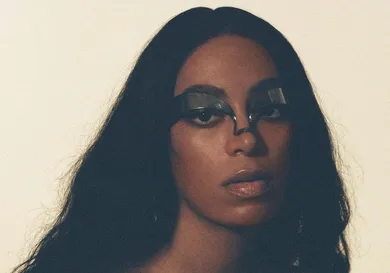Solange's last record was never meant to be a divisive instrument, even though in essence, it feels cowardly not to mention the welcome influence it had on a selected audience. Most artist/performers are instructed to fix their attention on a single demographic, so they can achieve a semblance of connectivity. Solange used that to her advantage on a very profound level. By relegating A Seat at the Table to a single audience, as illustrated by "F.U.B.U." in particular, Solange watched herself become the personification of an ideal path to love, Black excellence, and feminine assertiveness. On the flip side, those who choose to view her latest project under the same pretenses, run the risk of losing the point, for Solange's When I Get Home unfolds a little differently - with the kind of cryptology that would run a truth seeker mad with envy.
On When I Get Home, Solange plunges into the editing process without a care in the world, beyond the obvious connotations of home and identity she prefaces in the title. The vocal interlude that precedes "Stay Flo" is a fine example of such. On "Can I Hold the Mic (Interlude)," Solange patches together audio clippings from an old interview in which Diamond and Princess of Crime Mob tussle over who gets to hog the microphone. As the tape runneth over, Solange interrupts the proceedings with an existential monologue. It might just as well be the closest thing to a truth-seeking moment that you’ll come to find on When I Get Home. Solange rarely ventures out without a purpose.
Incessant talking is nothing I would ever attribute to Solange's creative output. Solange seems all the more focused on exploring the emotional language of minutiae, made apparent by the stylistic choices she makes along the way - like the mention of a candy paint job on "Way to the Show," a scene set by the cooing effects of her subtle singing voice. "Uh-huh, uh-huh, you can get it," she sings in a beguiling effort to highlight her Southern charm. In the mind of the listener, a valet parking attendant could very well appear in view, holding the keys to a Candy slab colored Solange-resplendent. The slightly off-kilter chops trap the listener in a Houston state of mind they never thought imaginable.
Some will harp on the obvious: the calmness that was distilled on A Seat at the Table doesn't carry over to When I Get Home. For Solange to aptly recreate the feeling of haziness associated with Barre culture, she smartly chose to leave the "centered" dynamic behind. The suffusion of elements central to Houston culture and hip-hop are far too numerous to count, some more obvious than others - which raises the question: how did Solange manage to be altogether sensitive towards her Houston brethren and sistren, without falling victim to hip-hop's numerous trappings?
In some respects, When I Get Home is way more grounded a tribute to Houston culture than Travis Scott's Astroworld, whose carnivalesque depiction of the city is loaded with divergent images. The difference being: one artist is probably more endowed than the other. When Travis Scott was "forced" to airbrush an image off his cover design, he did so without batting a lash. Had Solange been asked to do the same, even the slightest of edits would have caused her to reconsider the basic structure of the album. Both artists employ "editing" at a masterful level, although I would challenge you to spot the difference in execution.
The attention placed upon Solange's influence from a critical perspective often interferes with the perception of the music itself. When Solange calls attention to the superstitious qualities of Florida Water on "Almeda," the point is likely lost on a good number of listeners who've taken the ride. In truth, Solange is actually upholding a basic proponent or cultural value by mentioning the tonic spray, the fewer "incessant points" the better. The light manner in which she speaks of Black culture makes the message all the more poignant. Unfortunately, these aesthetic choices are easily misplaced in the hands of the uninformed, who will always feel like they’re being ignored due to the impasse created by inferences of Race, emotional learning, and musical equivalency. Let's not forget where Solange once rested her hat or the balance of her musical inheritance. She certainly hasn't.







